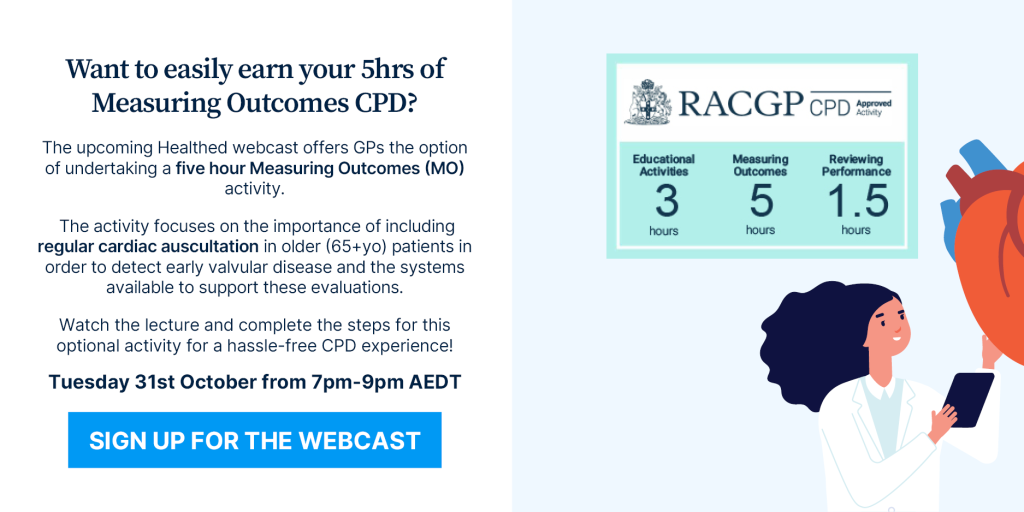Page 117 of 129
Phase out for antibacterial soaps gains speed
Australian manufacturers are falling into line with the US Food and Drug Administration’s ban of antibacterial washes, despite there being no change to TGA regulations in Australia.
Four local manufacturers – Aldi, Woolworths, Colgate-Palmolive and Reckitt Benckiser – have confirmed that they will eliminate the chemicals that have been outlawed in the US within 12 months, according to ABC News. Another, Johnson & Johnson, is also exploring options to reformulate Gamophen medicated soap, an acne treatment that contains the chemical triclosan.
In September, the FDA ruled that antiseptic wash products containing any of 19 active ingredients, including triclosan and triclocarban, could no longer be marketed in the US.
US manufacturers have one year to comply with the new FDA rule but many have already begun removing the chemicals from their products. Hospital use of antibacterial products is not affected by the ruling.
The use of these antibacterial ingredients is legal in Australia, but the TGA is currently reviewing whether any action is needed.
Infectious disease experts have praised the FDA’s decision, arguing that antibacterial soaps increase antibiotic resistance, disrupt hormones and may cause cancer in mice.
“I’m really surprised that the US has done this, because there must have been a lot of pressure from commercial entities,” said microbiologist Professor Liz Harry from UTS.
“I think this is fantastic. I applaud it.” Professor Harry called for a similar ban to be enforced by the TGA… Read More>>
Source: Medical Republic
Can Being A Pessimist Kill You? Heart Disease Risk Increases With Bad Attitudes, Study Finds
November 20, 2016
5 Faces of Toxic Relationships
As humans, we can read all the brilliant self-help books and possess wisdom about relationships, yet so many of us still are hindered by toxicity. We are often scared to speak up to those who produce toxic vibes and are even more fearful of leaving a romantic relationship, a friendship or a job due to toxicity.
Toxicity presents itself in all different forms and some of the worst come from individuals who appear shiny and nice. Shiny and nice on the outside can be an illusion, as things aren’t always as they appear and neither are people. The five faces of toxic relationshipsare common personality traits that are prevalent in abusive relationships but may be hidden behind a successful and superficially kind person.
Hitting close to home
Relationship toxicity is something my co-contributor, Kristen Fuller, M.D., experienced firsthand, which resulted in her passion for communicating about the topic. She writes: “I myself had all the tools to avoid a toxic relationship, but I entered into an emotionally and mentally toxic relationship with someone who seemed like he had everything: a great family, prestigious education, a successful career and apparently a kind personality. I quickly realized this was all a facade and learned how deep toxicity runs and why it is so hard to escape emotional and mental torture when someone looks so ‘perfect’ on the outside.
“As the saying goes, ‘Beauty is only skin deep.’ I learned the importance of recognizing toxic relationships and friendships and how to navigate these types of relationships. I have learned to cut out the bad people in my life and treasure those who bring positivity. In the end, I have become a stronger person in all capacities, even though it took being dragged through what seemed like endless amounts of darkness.”
Whether it is cutting ties to a friendship, a romantic relationship, a family member or a work relationship, most of us can relate to the feelings of drowning because of a toxic individual. Of course, there are many more than five faces of toxic relationships, but these seem to be fairly common. All of these faces can overlap, and two or more may occur simultaneously. Think of this as the original Greek theater, where actors walked on stage with various masks… Read More>>
Source: Psychology Today
Postpartum Contraception
This article describes the importance of postpartum contraception, dispels some of the myths and details the pros and cons of the various contraceptive options available in Australia.

November 18, 2016
Stress ‘changes brains of boys and girls differently’
Very stressful events affect the brains of girls and boys in different ways, a Stanford University study suggests.
A part of the brain linked to emotions and empathy, called the insula, was found to be particularly small in girls who had suffered trauma.
But in traumatised boys, the insula was larger than usual.
This could explain why girls are more likely than boys to develop post-traumatic stress disorder (PTSD), the researchers said.
Their findings suggest that boys and girls could display contrasting symptoms after a particularly distressing or frightening event, and should be treated differently as a result.
The research team, from Stanford University School of Medicine, said girls who develop PTSD may actually be suffering from a faster than normal ageing of one part of the insula – an area of the brain which processes feelings and pain.
The insula, or insular cortex, is a diverse and complex area, located deep within the brain which has many connections.
As well as processing emotions, it plays an important role in detecting cues from other parts of the body.
The researchers scanned the brains of 59 children aged nine to 17 for their study, published in Depression and Anxiety.
One group, of 14 girls and 16 boys, had suffered at least one episode of severe stress or trauma while a second group, of 15 girls and 14 boys, had not been exposed to any.
In the group of traumatised boys and girls, there was evidence that one area of the insula – the anterior circular sulcus – had changed in size and volume compared with the group with no trauma.
This shows that the insula is changed by exposure to acute or long-term stress and plays a key role in the development of PTSD, the researchers said… Read More>>
Source: BBC News
November 16, 2016
Most doctors don’t cite cost as a factor when deciding treatments
The rising cost of medicines may be a growing problem for many Americans, but a new survey finds that cost is generally not a key factor when doctors decide which treatments to prescribe their patients.
Among six different types of doctors queried, only primary care physicians cited cost as among their most important considerations. Forty-seven percent ranked the issue as a key concern, behind evidence that a drug is safe, effective and well-tolerated.
The various specialists – oncologists, cardiologists, neurologists, dermatologists and pulmonologists – also named these attributes as the most important issues to consider. But cost was much less of a consideration compared with 10 other concerns that were cited, according to the survey CMI/Compas, a market research firm that queried more than 800 doctors last June.
For instance, just 25 percent of cardiologists pointed to cost as the most important factor. Cost ranked as the fifth most pressing concern among dermatologists, as 40 percent called it a factor. Thirty-three percent of oncologists cited cost, making it only the sixth most important issue. Neurologists named cost as the eighth most pressing matter. And pulmonologists ranked cost as least important.
Why is there such a difference between the primary care doc and the specialists?
“This is likely because of the nature of the visit with the primary care doctor and what that may entail,” explained a spokeswoman for the research firm. “Imagine you’re a primary care physician who needs to keep track of a huge range of potential diagnoses and cures. You have a patient complaining of persistent GI issues. Could it be a food allergy, constipation, Crohn’s disease? It’s likely you’d want to start by prescribing a lower-cost medication addressing the most likely culprit.”
“There may also be pushback from the patient who may feel concerned about cost, more so than a patient with a chronic or life-threatening illness,” she added.
Of course, this is reflects a certain amount of speculation. Nonetheless, the findings suggest that many physicians remain more concerned with finding the best medicine for the ailment at hand, as they should. But this will also place more of the onus on patients to talk to their doctors about affordability when reviewing treatment options… Read More>>
Source: STAT
Trump’s Victory and the Neuroscience of Rage
Pollsters, politicians, much of the press and public are dismayed by Donald Trump’s surprising victory in the presidential election, but not neuroscientists. The bewilderment arises from an attempt to comprehend the election result rationally, but rage, not reason, is what drove people to put Trump in the White House.
Emotions are powerful motivators of behavior. For most animals, emotion, not rational thought is what drives behavior, and this remains true for our esteemed species, self-christened as Homo sapiens—“the wise one.” But our decisions are not made solely by reasoning. In fact, in the most complex and momentous decisions we make we rely on emotion—gut feelings. Whom to marry, where to live, or even what entrée to select from a dinner menu, are decisions we make not by reason, but rather by how we “feel.”
We have emotions because we need them. They arise from an astonishing neural network that performs an extremely complex, instantaneous analysis of our situation and sets us upon a definitive course of action. To accomplish this, input from all of our senses streams into the brain’s limbic system to assess our internal and external state, constantly sifting the data stream on the lookout for danger. All of this information processing operates below the level of consciousness and rational thinking, because the enormous amount of information processing involved would overwhelm our conscious mind. We can hold no more than a pitiful string of seven digits in working memory on average, which is why the simple steps of long division requires a pencil. When faced with very complex situations, it is our deep brain threat assessment circuitry, not only our cerebral cortex, that most often moves us to action. Especially so when our fundamental wellbeing is at stake. But language arises from neural circuitry in the cerebral cortex, so the brain’s subcortical threat detection system does not communicate with words, but rather by using multicolored emotions. Each emotional feeling communicates clearly to our conscious awareness the specific type of threat confronting us: hunger, fear, loneliness, alienation, jealousy, frustration—a rainbow of infinite colors, but every one a brilliantly distinct hue of meaning.
Many in this country feel angry, fearful, and threatened. These feelings arise from perceptions of personal risk, social disruption and alienation, imminent threats of terrorism, and a chronically dysfunctional government. The pollsters got it wrong because the act of asking the question carries the implicit assumption of a rational explanation. But rage is not a reason. And emotions are not always accessible by self-assessment—“I’m not angry!” he screamed at her. People are angry, and the emotion of anger serves only one purpose—to prepare you to fight.
Fighting for all animals is risky, and so only a very few specific triggers will activate the neural circuits that launch us into a violent rage. These neural circuits of defensive rage are being identified, and with this new information the outdated “lizard brain” notion of our limbic system driving us to do beastly things is being replaced by a far more detailed understanding. Different types of threats activate different circuits of rage and defensive aggression in our brain. Most of these circuits are deeply engraved by evolution in the brains of our primate and mammalian ancestors. A mother’s instant reaction to respond with unlimited aggression if necessary to protect her child is a familiar example. The human brain shares this same neural circuitry with other animals, and that circuit is separate from the neural circuit that launches us into defensive aggression in response to another type of danger, facing an intruder for example. To understand this election you must understand the brain’s threat detection mechanism… Read More>>
Source: Scientific American
Page 117 of 129





